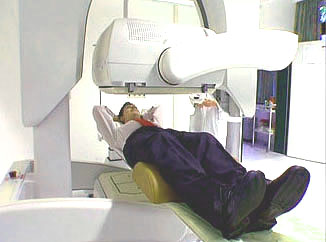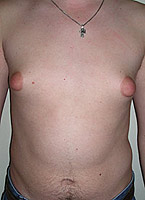What methods are used to diagnose thyroid cancer? What are these methods? Read in this article.
Content
Thyroid cancer manifestations
Increased attention to features and symptoms — The best way to the early diagnosis of most cases of thyroid cancer. With this form of cancer, the following features and symptoms are possible:
- Seal (tumor education) on the neck, and sometimes fast-growing.
- Neck pain, sometimes spreading to the ear.
- Hoarseness voice.
- Violation of swallowing.
- Labored breathing.
- Cough, not related to infectious disease.
If there are any of these signs or symptoms, you need to urgently consult a doctor. Other tumors of the neck area and many neucholar diseases may cause the appearance of some of the above symptoms. However, the only way to find out whether these symptoms have a connection with thyroid cancer, is a medical examination. The earlier the correct diagnosis is set, the faster the treatment will be started and the more effective it may be.
Information about the disease and examination with thyroid cancer
If there are signs or symptoms, suspicious on the thyroid cancer, it is necessary to undergo a complete medical examination. The doctor will ask about risk factors, symptoms and other health problems. If someone in the family had a thyroid cancer, especially medullary cancer, or cerochromacita — adrenal tumor, you need to report this doctor.
During the survey, the doctor will receive additional information on the signs and symptoms of thyroid cancer and health. The doctor will pay special attention to the size and consistency of the thyroid gland and on increased lymph nodes on the neck and will assign an additional examination.
Research methods for thyroid cancer
Scanning thyroid gland: During this study, a small amount of radioactive iodine or technetium is introduced through the mouth or in Vienna. The introduced radioactive substance accumulates in the thyroid gland and the special chamber is estimated the amount of accumulated substance. Changed thyroid zones accumulate fewer radioactive substances compared to surrounding tissues and are called «Cold» nodes. Knots accumulating more radioactive substance called «hot».
 Most thyroid nodes look like «Cold» on scanograms. Considering the fact that both benign and malignant nodes may have «Cold» Foci, this study has little helps in the diagnosis of thyroid cancer. It is performed in the case when the results of thin-game biopsy is doubtful. If the biopsy confirms the thyroid cancer, the scanning helps to clarify the degree of propagation of the tumor process (stage).
Most thyroid nodes look like «Cold» on scanograms. Considering the fact that both benign and malignant nodes may have «Cold» Foci, this study has little helps in the diagnosis of thyroid cancer. It is performed in the case when the results of thin-game biopsy is doubtful. If the biopsy confirms the thyroid cancer, the scanning helps to clarify the degree of propagation of the tumor process (stage).
After removal of the thyroid gland, re-scanning gland. Scanning with radioactive iodine is often used in patients with papillary and follicular thyroid cancer. This scanning is not used with a medullary thyroid cancer, since the cells of this type of cancer do not accumulate iodine. Scanning of the thyroid gland using radioactive iodine gives the most accurate results in patients with a high level of thyroidistimulating hormone (thyrotropine).
Ultrasound procedure: With this method, the amount and size of the nodal formations of the thyroid gland is studied. However, when an ultrasound of thyroid cancer and benign formations look equally, therefore this method is often not applied.
Computed tomography (CT): This method is usually not used to diagnose thyroid cancer, but applies to clarify the stage of the disease.
Magnetic resonance Tomography (MRI): The method is very useful when examining oncological patients, since in some cases it allows you to distinguish a benign tumor from malignant.
Blood analysis. On the blood test it is impossible to diagnose the thyroid cancer. However, the determination in the blood of a thyroidism hormone allows you to judge the total state of the thyroid gland. With a suspicion of medullar cancer of the thyroid gland, it is necessary to investigate the levels of calcitonin in the blood. This study can help in the diagnosis of the medullary cancer of the thyroid gland.
Thyroglobulin — protein that is produced by the thyroid gland. However, after removing most of the gland or its destruction using radioactive iodine, thyroglobulin levels must be very low. If this does not happen, then cancer cells are still present. With raising the level of this protein, you can think about the recurrence of the tumor.









